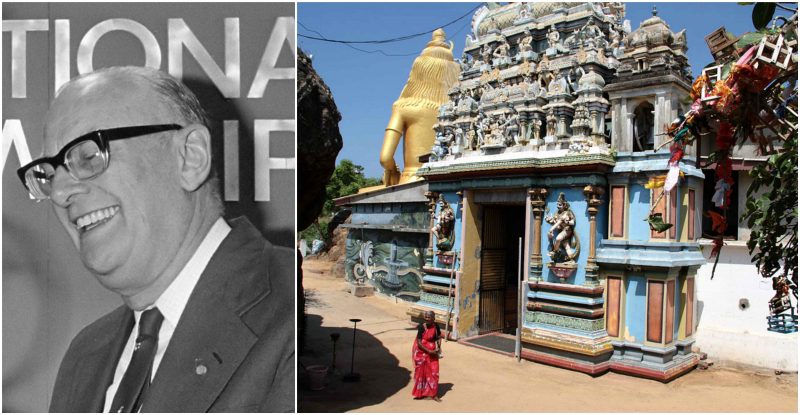The “Koneswaram temple of Trincomalee” or “Thirukonamalai Konesar Temple – The Temple of the Thousand Pillars” and “Dakshina-Then Kailasam” is a classical-medieval Hindu temple complex in Trincomalee, a Hindu religious pilgrimage centre in Eastern Province, Sri Lanka. It is one the Pancha Ishwarams dedicated to Shiva. It was built significantly during the reign of the early Cholas and the Five Dravidians of the Early Pandyan Kingdom.
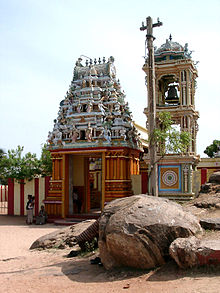
Developed from 205 BC, the original kovil combined key features to form its basic Dravidian temple plan, such as its thousand pillared hall – “Aayiram Kaal Mandapam” – and the Jagati, expanded by King Elara Manu Needhi Cholan. Regarded as the greatest building of its age for its architecture, elaborate sculptural bas-relief ornamentation adorned a black granite megalith while its multiple gold plated gopuram towers were expanded in the medieval period.
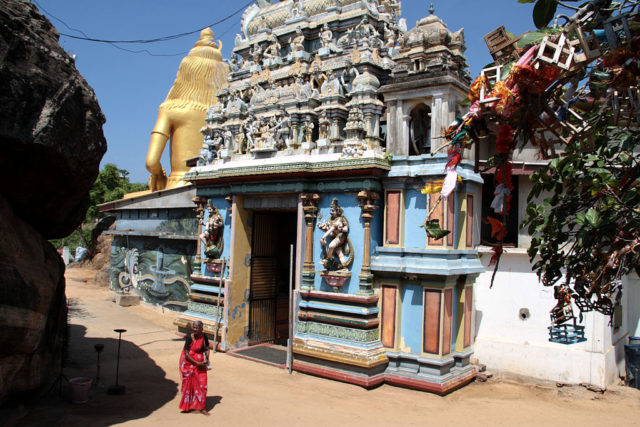
The complex was destroyed in colonial religious attacks between 1622 and 1624 and a fort was built at the site from its debris. A 1632 built temple located away from the city houses some of its original idols. Worldwide interest was renewed following the discovery of its underwater and land ruins, sculptures, and Chola bronzes by archaeologists and Arthur C. Clarke. It has been preserved through restorations, most recently in the 1950s. Granted ownership of villages in its floruit to form the Trincomalee District, Trincomalee village is located on the cape isthmus within the compounds. The modern temple has been a source of conflict between the majority Sinhalese and minority Tamils due to its position in a geostrategically important area. Revenue from the temple provides services and food to local residents.

In 1950, the original shrine’s gold and copper alloy bronze statues from the 10th century CE of a seated figure of Shiva (in the form of Somaskanda), Shiva as Chandrasekhar, his consort goddess Parvati, a statue of the goddess Mathumai Ambal, and later Lord Ganesh were found by the Urban Council of Trincomalee buried 500 yards from the Koneswaram site while digging for a water well. They were taken in procession around the region before being reinstalled at Koneswaram.
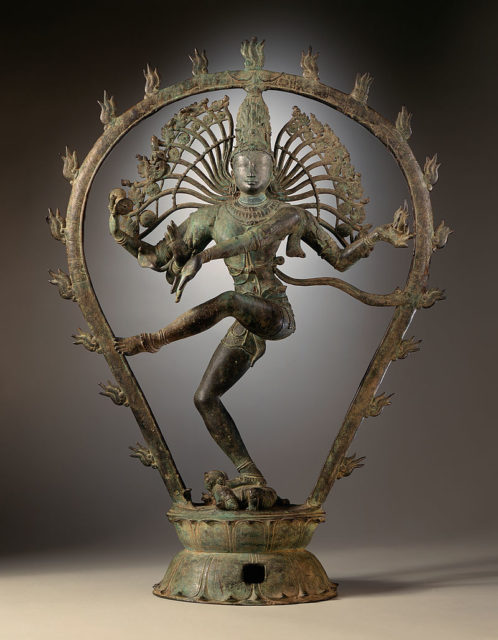
In 1956, while scuba diving, photographer Mike Wilson and author Arthur C. Clarke uncovered ruined masonry, architecture, and idol images of the sunken original temple — including carved columns with flower insignias, and stones in the form of elephant heads — spread on the shallow surrounding seabed.
The pillar, as well as the ruins, display Tamil, Pallava, and Chola architectural influence of the 3rd-9th-century era, corroborated by the discovery of Pallava Grantha and Chola script inscriptions and Hindu images found in the premises that suggest the dynasties took a keen interest in the temple.
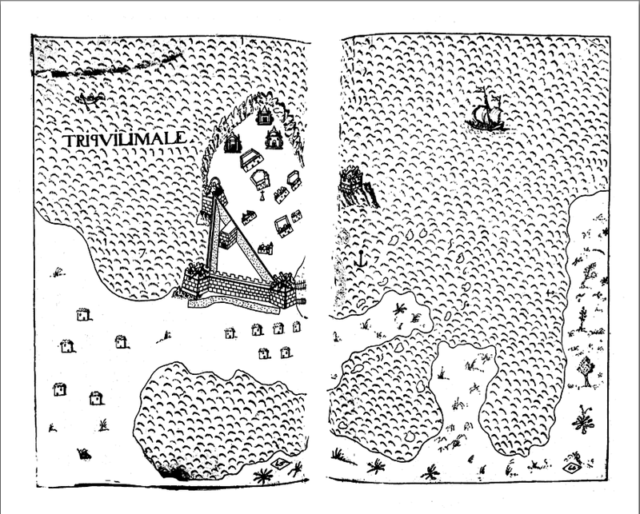
The divers retrieved the legendary Swayambhu lingam from the ocean floor, a large natural stone obelisk that, according to legend, was one of 69 naturally occurring lingams from time immemorial originally found on Mount Kailash of Tibet and housed in Koneswaram by King Raavan – his most sacred power object from mythological times. This lingam was reinstalled at the Koneswaram site.
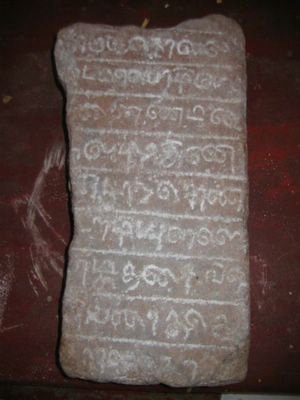
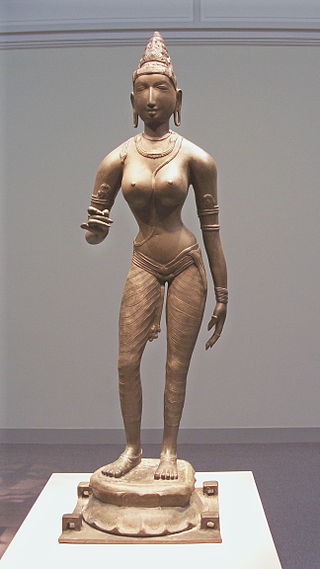
Publishing their findings in the 1957 book The Reefs of Taprobane, Clarke expresses admiration for Swami rock’s three thousand year veneration by Hindus. Identifying at least three Hindu temples as having been built on and around Swami rock, Clarke describes the 10th century CE Koneswaram idols as “among the finest examples of Hindu bronze sculpture known to exist,” the seated Shiva Chola bronze “a masterpiece” and the battered stone work at the foot of Swami Rock as “probably the most photographed underwater ruins in the world.”
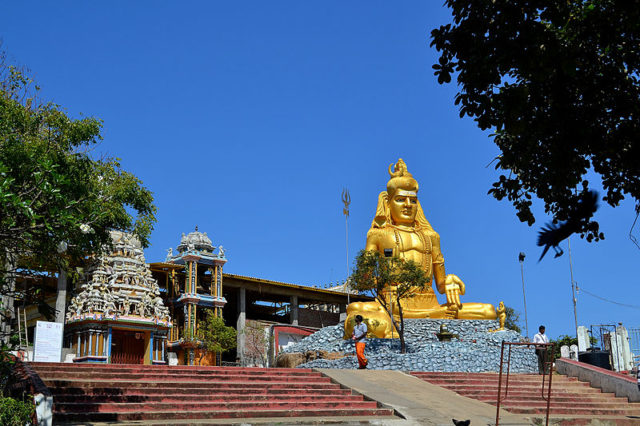
350 years after its destruction, Sri Lankan Tamil Hindu people of Trincomalee organized the temple restoration committee to restore the temple; the old images were reinstalled amid opening ceremonies in the newly restored shrine on 3 March 1963.
